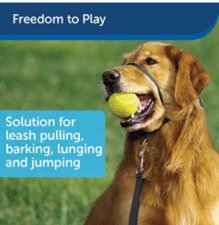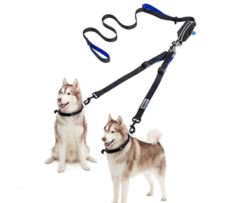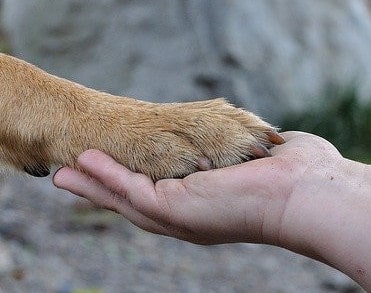Not long ago, my two dogs had a couple of incidents that are requiring some attention. Attention, meaning, training with the right tools. I’m not sure if you’re new here, but I have Atlas, Muse, Buttons and Harry. Atlas and Muse are both Pocket Bullies. Stemming from the American Bully lines. Buttons and Harry are very small Chihuahua’s. Not your typical little fat Chihuahua’s. No, these two are pretty small.
But this isn’t about Buttons or Harry. This is about Atlas and Muse. Both of them need some strenuous training. Atlas has been trained already, but she needs a refresher apparently. Muse, she needs training period. She only knows sit, and I expect all my dogs to know the basic commands. Sit, Stay, Come, Down, Speak, Heel, Leave It.
However, in order to train a dog, you need to make sure you have the right training tools first.
Training with the Right Tools. What do you Need First?

First off, you need treats. You can’t train a dog without some sort of reward system. Dogs don’t like to do things just because. Well, they will after they’re trained. But in order to start this, you need to have an incentive for them to do what you’re asking them to do.
Dogs are an instant gratification kind of animal. Most animals are actually. But dogs, they’ll almost do anything for food. Unless you have a dog that hates all treats and snubs their nose up. You’ve got to find something else they love when this happens. Sorry!
As far as Muse and Atlas go, they love treats. And I’m not referring to big treats. You need to have something small and bite size in order for them to quickly eat it, and get back to training. Training should be consistent, and concise. I don’t usually spend more than 10 minutes each session in training. This tends to make them want to venture off and get distracted. So, keep your sessions short and have treats on hand.
Second Training Tool you Need – A way to keep them in Check.
Big dogs can be harder to train if you don’t have a way to keep them with you. You need to be able to control what the dog does, especially in certain circumstances. What I mean by this is, if you’re trying to leash train and your dog keeps pulling you around, how are you going to train them not to do that? By letting them drag you around? Oh wait, maybe you think yelling at them is a good idea? No.

Yelling at the dog after the fact, does nothing to train that dog. Dogs think in terms of right now. They don’t think, “Gosh, Mom is mad at me for pulling her into the lake. I just wanted to see the ducks.” Now, you can try this route if you like, but I find it doesn’t work very well.
I always train my dogs with the gentle leader. This gives me complete control over my dog, no matter how big they are. They can’t pull me, they can’t drag me and they can’t lunge at people or dogs. And, when they heel and walk right at my knee, where I want them, I give them treats. If they try to pull away, I gently correct this, pull them back to my knee, saying “Heel” and when they do, I give them a treat.
Third Item you Need to Train.
Patience. Yes, you might have to go out and buy some. Joking, good luck with that. Dogs need to know they’re not in trouble. If you get agitated, they will sense that and think they’re in trouble for something. They don’t understand what you’re asking of them. So, why get agitated? Frustrated?
Think about when you were new at something, like say, jump roping, or when you learned to ride a bike. If your parents started just yelling at you because you weren’t getting it, do you think you would have continued with that? Probably not. You’d be scared, especially if they hit you because you weren’t getting it.
My husband, I’ll admit, has no patience with dogs. His thing is, if they’re not listening, smack them on the butt with the end of the leash. No babe. First off, the dog isn’t like us and thinking clearly, “I hope I make Dad mad today. I’m going to ignore him for a while!” They’re reactive. And, if they don’t know what you’re asking them to do, why get mad at them? You have to teach them our language first. Which comes to the final item you need.
Terminology.
You need to know the commands you’re trying to teach your dogs. If you want to come up with your own language, fine. Do it. But if you’re going to teach your dog to sit, then teach them to Sit. Don’t expect them to know Sit if you’re teaching them “On your butt” and then switch to Sit.
Wait, what? That’s exactly what your dog is saying when they look around confused. This may sound like common sense, but it’s really not to all people trying to train their dogs.
Some common confusion that I hear, and this is often, is the confusion between Down and Off. Two very different meanings when it comes to my dogs. Down means to lie down. Off, means to get off of whatever you’re on, like other people’s furniture. So, when someone gets mad at my dogs when they jump on their couch and they say Down, they get mad when my dogs lie down. “Don’t you mean, Off?” And my dogs will jump down from the couch.
I always want to say, “Ask me next time please.”
Final Words on Training with the Right Tools.

Hopefully you have a better sense of important things to have on hand now. And, hopefully before you start the training process. Muse is pretty new to our house. In the beginning, she was simply timid and followed me everywhere. However, now that she knows she’s home and with her new Dog Mom, she’s exploring more. This means, she’s coming out of her shell and showing me some things that I need to work on.
I haven’t begun her training and socializing yet, because I’m waiting on the Gentle Leader that’s specific for her. I know not to start her regime until I have that on hand. I would never try to train my dog without the right tools first. Then, when I get to the training sessions of her and Atlas together, I already have the proper leash on hand for them for that as well.
The double leash. I’ll need this, with both of the gentle leads to train them to be in unison when we walk. Right now, Atlas sticks to a side, but Muse is all over the place. So, get the tools, get the terms down and get some patience. Because training any dog requires all of this first.
What other tools do you recommend for training your dogs? Share with us!

I´m glad I read this because I wanted to learn more about the Gentle Leader. I have trained my dogs basic commands, but not all. My dogs do love treats though and so treats are always a great way to get some training done. Duke is a new dog, I adopted him a few weeks ago and he learned by copying from my other dogs. For example, he quickly understood that when they sit they get a treat, so now when I’m cooking something he comes up to me and sits, wagging his tail enthusiastically, waiting for a treat. It’s so cute 🙂 Duke is a jumper, he has never learned not to do that. What is the best way to teach a dog not to jump?
Hi Christine,
Jumpers are very hard to train to not do that, I will say. The best way that I was able to train Annie not to do that was to have a rolled up newspaper, or any paper for that matter on hand. I made sure it was flimsy and didn’t thwack her with it, but the noise alone is what was able to calm her down. So, when I was expecting people over, I made sure to have this on hand, waited for her to do the usual and jump up, then a little paper rattle to her butt and said “Annie, Off.” I never used down, because that’s my term for lay down, so not to confuse her. So whatever term you use for them to get off of furniture, or not be on something, that’s what you want to use. Unfortunately, because he’s so accustomed to it, it will take a little time. But if you’re consistent with it every single time he jumps on someone, he should stop doing it within a few weeks.
If Annie was really good about it by the way, and she would sit instead, I’d give her a treat and say Good Girl, Good Off. I know it sounds weird to use the terms in this way, but she understood quickly that she did what I wanted. She stopped jumping on people after about 3 weeks of doing this nonstop.
Everything prior to using the paper, simply didn’t work. Especially when I tried to get her to stop with anger or frustration. Dogs simply see this as a way of greeting, so they don’t know it’s necessarily bad. They just want to be closer to people’s faces and see it as a way to make contact. So, once she learned that I wasn’t upset about it, I simply wanted her to stop, that’s when she started doing better with it!
Hope this helps!
Katrina
Thank you! I will try that out 🙂
Awesome! Let me know how it works for you!
Katrina
Thanks for sharing this post. I was expecting a long list of tools when I clicked on the link to your site. But I’m glad to see only two, actually three essential tools. Patience is the key to training dogs or any other animal. I taught my dog lots of commands and he’s very obedient. However, no matter how many treats I give him in exchange for the ball when we’re playing fetch, he just doesn’t want to give up the ball. And he’s 13 years old! It’s his favourite item in the world and there’s no amount of treats that can make him give the ball on command LOL.
Hi Ivan,
I had a dog that was like that actually. You could throw the ball all day, several in fact, and she would never bring them back for anything. I tried the same thing. To some dogs, they think it’s a game. It is a game, of course, but what I mean is, they think that once you throw the ball, it’s theirs. They simply don’t understand that by them bringing it back, they get to chase it again. And, some might be thinking, why would I chase this? Do you chase balls? Of course not! Although, I would try to chase her down to get the ball back, but it was never going to happen. She’d lay down and start chewing it up instead, and once I got close, she’s pick it up and run away.
Not all dogs are fetchers I’m afraid. They simply want their beloved ball back, and once you let it go, it’s fair game to them.
I’m glad you liked this one! Sorry I don’t have a solution to your game of fetch. I simply thought it was hilarious when my friends tried to throw the ball,and I told them, she’s not bringing that back you know? They never learned.
Thanks for stopping by!
Katrina
Hi Katrina,
Yeah, training dogs takes lots of patience, and they can only focus on a short period. Training them for only 10 minutes with treats might be a good solution. I used to have a Labrador who loves eating, and it’s really hard to treat him when we ask him down or off. Eventually, we found the treat he loves the most, and he followed our words accordingly. It’s the time we realize that he actually understood us, and we felt so happy.
I am interested in the treats from Petco, and it looks yummy even for me. They do good on the package design, and I am sure they do well on the flavor.
Cheers,
Matt
Hi Matt,
My dogs love these treats and will do anything for them. Now, Atlas is two and we don’t need treats to train her anymore. I still give her them of course, especially if I’m training her something new. But I’ll admit, I’m a basics kind of trainer. I don’t do the rollovers, or the shake. My kids like my dogs to shake, but I’ve found that by teaching dogs to shake hands, it tells them it’s okay to put paws on people and then getting them to get off of people at greeting is harder. So, I forgo those commands and stick with the ones that are important.
Thanks for stopping by! Glad you liked this one!
Katrina
Treats definitely have to be the first tools one should have before thinking of training your dog, that alone is enough motivation.
I have also seen a few people using a CLICKER. This looks like box-like device that makes a click sound that is pressed when your dog does something impressive and then you reward your dog with a treat. I don’t know much about it but if you have the time you could try it out and see how it goes.
Thank you for these wonderful tips
Hi Femi,
The clickers do work, but not with all dogs. The point of the clicker is to actually ween your dog away from needing treats by teaching them, or asking a command of them. It’s often used in the beginning of the training stages. Once the dog obeys the command, you click the button, followed immediately with a treat. What this does, is it teaches your dog that when that click goes off, they get a treat. I’ve used them in the past, and they work well, but in all honesty, I don’t need the clicker once they’ve been trained. Generally, my dogs get praise for obeying the commands when I don’t have treats. They usually know that Mom is happy so they do what I ask.
Some trainers love the clickers and swear by them. Myself? I’m a treats kind of person. I just usually have treats in my car and with me everywhere I go. I should say, I have the treats right now because of Muse. Atlas is fully trained and does really well with obeying. Muse is a different story, so I carry them because of her. But she has very high anxiety, and I often need them to calm her down and focus on me. Once she’s focused, she’s much better. But her training just started when we got her 2 months ago. So, she’s a special case.
Thanks for stopping by and reading this! I’m glad you liked it.
Katrina